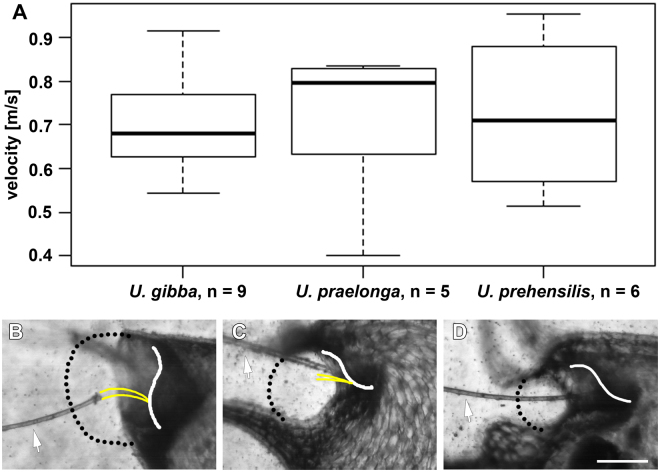Figure 13.
Fluid velocities and aspiration zones in three Utricularia species representing the three main trapdoor movement types. (A) The top fluid speeds among the three tested species do not differ statistically (Kruskal-Wallis test, χ2 (2) = 0.24698, p = 0.884). (B–D) Lateral views on trap entrances showing the aspiration zones (dotted lines). The set positions of the doors (white lines) with trigger hairs (where present, yellow lines) are indicated. Also visible are the hair used for manually triggering the traps (arrows), as well as a multitude of tracer particles used to study the flow of water during suction. (B) Aquatic U. gibba (UVTT). (C) Terrestrial U. praelonga (UPTT). (D) Terrestrial U. prehensilis (UUTT3). Scale bar (applies for B–D) = 100 µm.

